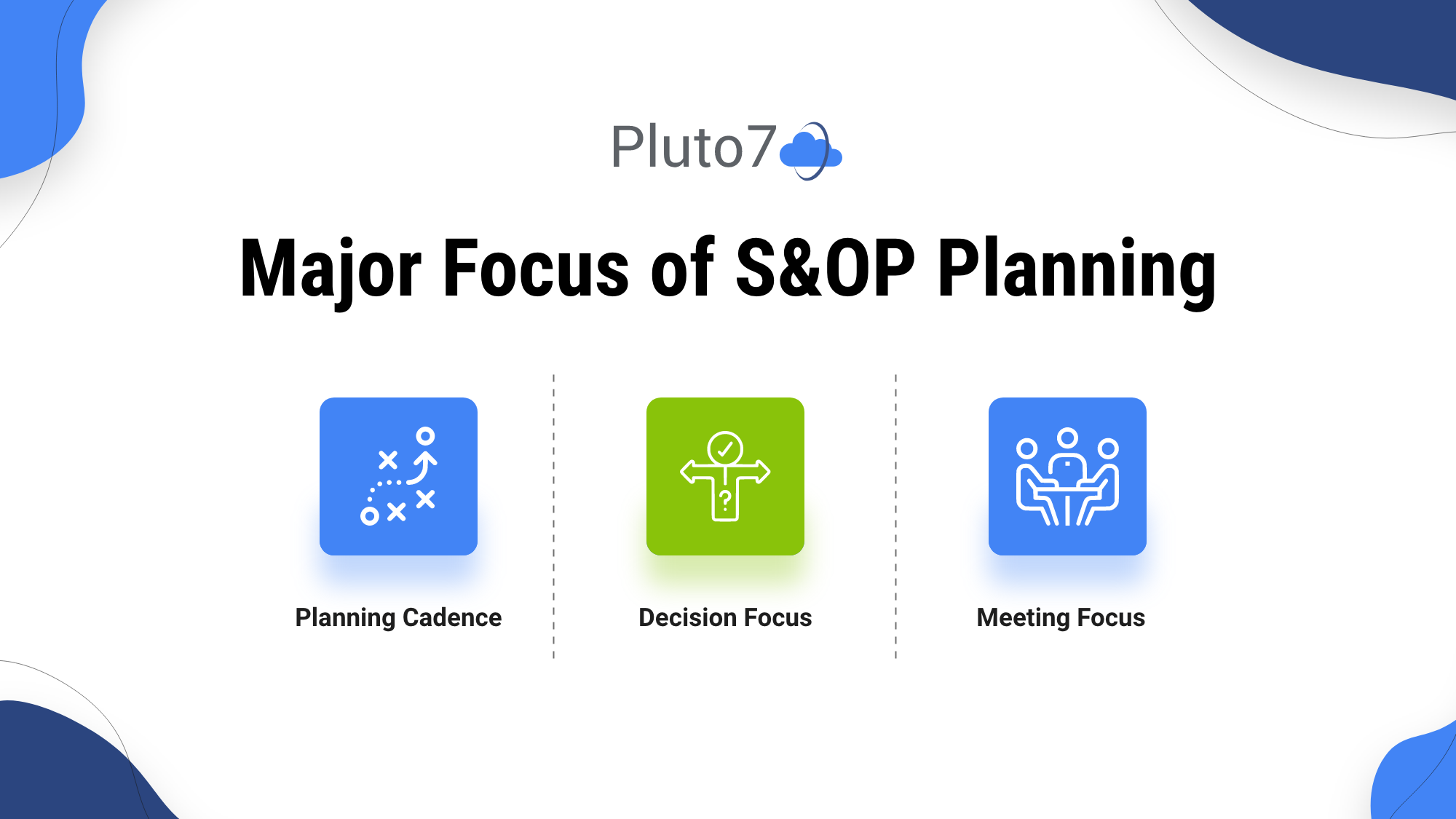
Transform Your Supply Chain Planning and Marketing Strategies with Google Cloud and SAP Integration

Transform Your Supply Chain Planning and Marketing Strategies with Google Cloud and SAP Integration
August 10, 2022 | Swaminath G
Blog / Right data foundation with ML can reignite an effective S&OP.
S&OP today runs on outdated processes. Old ways of running meetings, setting priorities and defining actions centered on KPIs. Companies have not been able to get out of this cycle. Part of it is due to change management with workforce adaptation. The bigger reason is that current practices are rooted in rigid ways of thinking that are unable to keep up with the rapidly changing supply chain environment and this needs a rethink of the current S&OP processes.
S&OP as a function tries to tackle two aspects:
Several changes to S&OP have emerged over the years as it has evolved to meet the above objectives. IBP (Integrated Business Planning) as a concept was introduced to align with the financials. S&OE (Sales and Operations Execution) also emerged to bring structure and focus to daily operations and planning rather than being an ad hoc process. But these improvements did not bring in the maturity companies need to be able to orchestrate and make higher quality decisions.
In order to be able to take advantage of the technological improvements in planning, companies should rethink the way their S&OP planning is done. The three major focus areas should be:

Pluto7’s Supply Chain Planning Solutions help to tackle some of the above points by bringing a view that connects the Strategic, Tactical and Operational Supply Chain processes and providing insights based on AI/ML technology that helps the Planning, Inventory, Warehousing and Distribution functions to anticipate Supply Chain events and re-plan their operations to align with Strategy.
Planning Cadence: Traditionally, companies meet monthly or bi-weekly for S&OP. The planning cadence would be more effective if it was driven by business rules and priorities. This way, whenever a business rule or priority is flagged to be breached, the re-planning can kick in. This leads to a continuous planning process as opposed to a periodic one. The advantage is that S&OP is more aligned to business realities. The process of knowing when to recognize a breach is where technology plays a part. Pluto7’s Planning in A Box (PiAB) Solutions offer continuous monitoring of events that indicate when a planned event is out of sync and will alert key users to take action.
Decision Focus: S&OP meetings generally run on a schedule that is determined by time based planning. For example, Strategic decisions run on a long term (3-6 month) cycle, Tactical cycle runs on a medium term cycle (days or weeks) and Operational decisions run on a short term cycle (hours, minutes). This traditional view may not the optimal way to plan and set S&OP priorities as the gap between strategic, tactical and Operational processes is converging rapidly in the uncertain Supply Chain ecosystem of today. There are instances where a priority order for a growth market/customer needs to be planned not only by the day to day operational decision makers, but also should involve tactical or strategic decision makers in the process. The convergence of this decision making is where Pluto7’s Solutions can help play a role. Firstly, Pluto7’s Planning in A Box (PiAB) solution can bring in a mechanism that recognizes the nature of impact of critical planning scenarios through a combination of parameters such as cost, customer level, order quantity, supplier lead times, service level etc and helps segment decisions based on importance. Secondly, Pluto7’s robust workflow mechanism helps alert and notify key personnel along the value chain regarding the re-planning. This has the effect of aligning key decision makers on critical impact decisions whenever they arise.
Meeting Focus: S&OPs generally are run with a focus on KPIs and ensuring key targets in terms of volumes and cost are met. Making KPIs the focus of the agenda ignores the actual problem to be tackled, which is whether the decisions are aligned with business rules and priorities. Rules such as which products to focus on more for production, inventory holding costs, sustainable manufacturing needs etc need deeper analysis, which drive priorities and help mitigate risks in the Supply Chain. Pluto7’s PiAB solution helps identify insights based on business rules, which provide supply chain personnel a view of key priorities to tackle, rather than just rely on KPIs based on dashboards.
In summary, recent advances in technology necessitate a rethink of the way traditional S&OP is run. Organizations that hold on to archaic ways of running planning and tying that to financial execution will not be able to react in time to Supply Chain uncertainties. The maturity curve for previously introduced variations to S&OP such as IBP and S&OE is on a downward slope. For an organization to have a competitive edge in its Supply Chain Planning, it needs to evolve with advancement in technology and align S&OP with a focus on insight driven decisions. Pluto7’s PiAB helps in bringing Supply Chain Planning closer to Execution by focusing on connecting processes across the chain and deriving insights built on AI/ML capability.
Reference: Gartner, Inc. |G00768627, Maverick* Research: The Digital Era — The End Of S&OP?
Published 27 June 2022